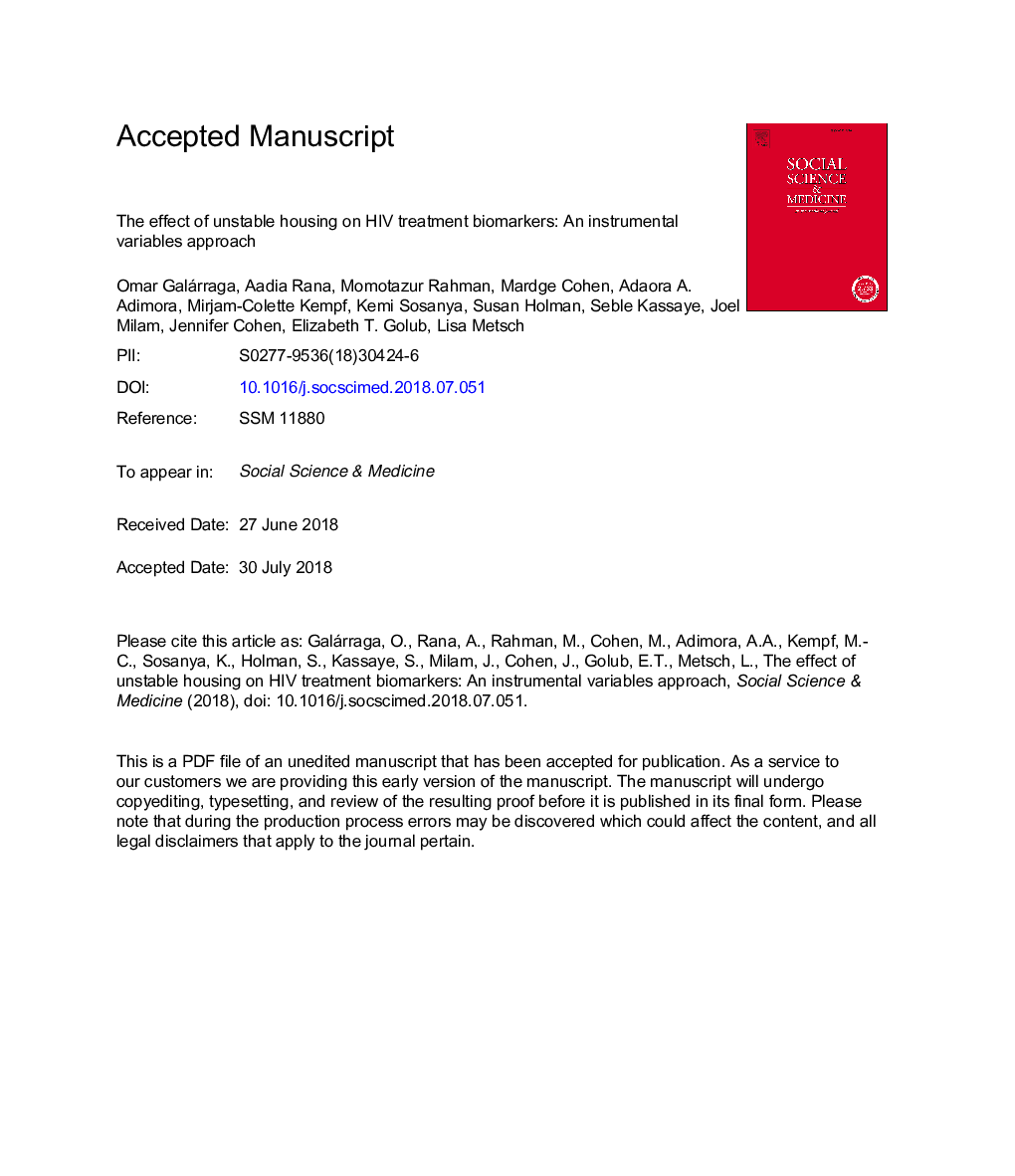| Article ID | Journal | Published Year | Pages | File Type |
|---|---|---|---|---|
| 8942294 | Social Science & Medicine | 2018 | 36 Pages |
Abstract
Unstable housing, including homelessness, is a public policy concern for all populations, and more critically for people with a serious health condition such as HIV. We measure the effect of unstable housing on HIV treatment biomarkers: viral suppression (viral loadâ¯<â¯200 HIV RNA copies per ml) and adequate CD4+ T-cell count (CD4>350â¯cells per μl). We use panel data (1995-2015) from 3082 participants of the Women's Interagency HIV Study (WIHS) sites in Bronx and Brooklyn (NY), Chicago (IL), Los Angeles and San Francisco (CA), and Washington (DC). The instrumental variable (IV) measures allocations for the Housing Opportunities for People with AIDS (HOPWA) per person newly infected with HIV, and it represents actual availability of housing assistance for HIV-positive persons at the metropolitan area level. Using an extended probit model with the IV, we find that unstable housing reduces the likelihood of viral suppression by 51 percentage points, and decreases the probability of having adequate CD4 cell count by 53 percentage points. The endogeneity-corrected results are larger than naïve probits, which show decreases of 8.1 and 7.8 percentage points, respectively. The hypothesized pathways for the effect are: decreased use of mental healthcare/counseling, any healthcare, and less continuity of care. Increasing efforts to improve housing assistance, including HOPWA, and other interventions to make housing more affordable for low-income populations, and HIV-positive populations in particular, may be warranted not only for the benefits of stable housing, but also to improve HIV-related biomarkers.
Related Topics
Health Sciences
Medicine and Dentistry
Public Health and Health Policy
Authors
Omar Galárraga, Aadia Rana, Momotazur Rahman, Mardge Cohen, Adaora A. Adimora, Oluwakemi Sosanya, Susan Holman, Seble Kassaye, Joel Milam, Jennifer Cohen, Elizabeth T. Golub, Lisa R. Metsch, Mirjam-Colette Kempf,
